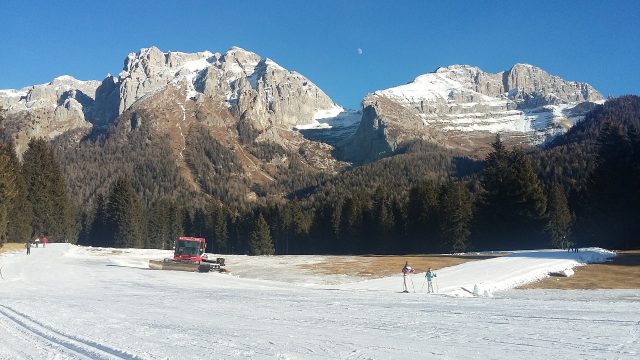
Only 35% of the Austrian Territory has Snow and the Entire Ski Season is at Risk
The country, which has always been considered the homeland of European skiing, is experiencing one of the worst tourist crises in the last 60 years due to the scarcity of snow which is also afflicting the Italian mountain resorts. Since 1961, in Austria, during the Christmas holidays, there has never been a lack of snow, covering almost 70% of the entire territory and thus transforming the nation into one of the most visited winter tourist destinations in the world. In recent weeks between December and January, however, there are very few white tongues near the ski lifts and often with so little snow as to make skiing impossible.
The worst period recorded so far, as regards the snow cover, in Austria, is that relating to 1987/88, when only 39% of the national areas were covered with snow, while, during the Christmas period between 2013 and 2014, the snow cover was 40% but still higher, even if only slightly, than the average of the last few weeks.
In Italy the situation is not so dramatic, at least in the north, while for the ski resorts of central and southern Italy, the season could already be compromised due to the very few snow showers this winter. In South Tyrol the values, this year, despite being below the decidedly higher historical average, allowed the partial opening of most of the lifts also because, as the provincial meteorologist Dieter Peterlin explains, the South Tyrolean area was fortunately spared by the warm “foehn” which made it impossible to consolidate the few snowfalls on the northern slope of the Brenner.
The milder temperatures recorded throughout Europe in recent years are slowly changing the winter landscape of South Tyrol, especially in the winter months and, at low altitudes, it will be increasingly difficult to enjoy a snowy landscape, with consequent economic hardships for the works related to skiing, both Austrian and Italian.
As evidence of the increasingly lack of snow in the Austrian mountains, it would be enough to watch the recent women’s Alpine Ski World Cup races, which took place in a scenario never seen before with only the whitewashed racetrack in an almost spring-like general context. Switzerland and France, as well as Italy, seem to experience slightly better situations but also in many low-altitude locations in the two countries, there are numerous ski lifts that have been closed or even never opened since last year.
What worries environmental analysts is not only the enormous economic inconvenience that the scarce snowfall is causing to the European managers of the ski resorts unable to open, but also the consequences that the lack of snow this winter will have over the next summer. In fact, without snow, the water supplies that will be used for crops throughout the hot period of the year will also be scarce, thus foreshadowing yet another hydrogeological crisis linked to drought.
2022 will be remembered as the worst year for all Alpine glaciers which, due to the absolutely anomalous heat recorded in every season, have already lost a large part of their volume and continue to melt inexorably. The Swiss Academy of Sciences has recorded a loss for Swiss glaciers of almost 3 cubic kilometres of ice in the last period, equal to 6.2% of their entire total volume. The previous melting record was in 2003 but the new data seem to double that of twenty years ago.
Such drastic changes in the European winter landscape were not foreseen in such a short timescale and it is feared that the situation could worsen even more in the coming years.



 Subscribe
Subscribe